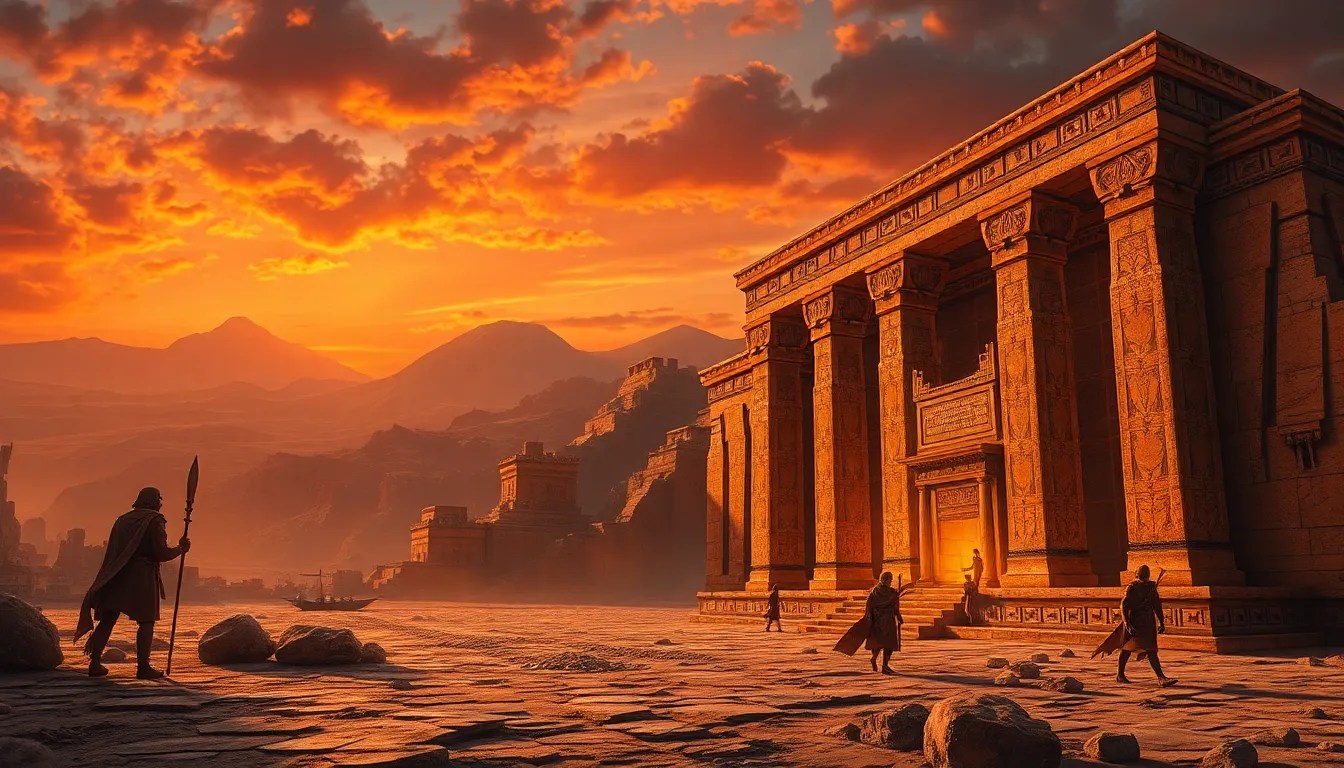The Atrahasis Epic: A Tale of Resilience and Adaptation
I. Introduction
The Atrahasis Epic is one of the most important literary works from ancient Mesopotamia, providing insight into the beliefs and cultural values of the Babylonian civilization. This epic poem narrates the story of Atrahasis, a hero chosen by the gods to survive a catastrophic flood, reflecting profound themes of resilience and adaptation.
Significant in Babylonian and Mesopotamian mythology, the Atrahasis Epic not only serves as a foundation for understanding ancient religious practices but also highlights the interactions between humanity and the divine. The narrative emphasizes the essential qualities of resilience in the face of overwhelming odds and the need for adaptation to changing circumstances.
II. Historical Context
The Atrahasis Epic has its origins in the early Babylonian period, with its earliest known versions dating back to the 17th century BCE. The epic was discovered in the ruins of the library of Ashurbanipal in Nineveh, inscribed on clay tablets in cuneiform script. Scholars have deciphered these ancient texts, revealing a rich tapestry of mythology that shaped the cultural landscape of Mesopotamia.
Set against the backdrop of a vibrant and complex society, the Atrahasis Epic reflects the religious beliefs of the time. The Mesopotamians worshipped a pantheon of gods who were believed to control the forces of nature and human affairs. The epic illustrates how these divine beings interacted with humanity, often leading to significant consequences.
The influence of the Atrahasis Epic extends beyond its own narrative, as it has shaped later mythologies, including the biblical story of Noah’s Ark and the flood narrative in the Epic of Gilgamesh. These similarities indicate the shared cultural heritage of ancient civilizations in the region.
III. Synopsis of the Epic
A. The Creation of Humanity
The Atrahasis Epic begins with the gods creating humanity to relieve them of the burdens of labor. The god Enki plays a pivotal role in this process, utilizing clay to fashion the first humans. The initial creation is intended to serve the gods by providing offerings and performing laborious tasks in their stead.
- Motivations for Creating Humans: The gods desired companionship and assistance, leading to the creation of humanity.
- Role of Enki: Enki, the god of wisdom and water, is depicted as a protector of humans, advocating for their welfare.
B. The Great Flood
As humanity flourishes, their noise and overpopulation irritate the gods, prompting them to consider drastic measures. The gods decide to unleash a great flood to wipe out humanity, seeing it as a solution to their grievances.
- Causes of the Flood: The flood is a divine response to human overpopulation and the chaos it creates.
- Atrahasis’s Warning: Enki warns Atrahasis, instructing him to build a boat and gather his family and animals to ensure their survival.
IV. Themes of Resilience
A. Human Survival amid Divine Wrath
The central theme of resilience is vividly portrayed through Atrahasis’s determination to survive the flood. Despite the overwhelming power of the gods, Atrahasis embodies the spirit of human tenacity.
B. Atrahasis’s Character as a Symbol of Resilience
Atrahasis is not just a passive recipient of divine favor; he actively engages with the gods, seeking knowledge and taking action to protect his loved ones. His character exemplifies the human capacity to rise above adversity.
C. The Importance of Knowledge and Foresight
The epic underscores the value of knowledge, as Atrahasis’s survival hinges on his ability to heed Enki’s warnings. This theme reinforces the idea that wisdom can empower individuals to navigate the challenges imposed by external forces.
V. Themes of Adaptation
A. Responses to Divine Challenges
In the face of divine challenges, humanity’s ability to adapt is paramount. The flood serves as a catalyst for change, forcing Atrahasis and the survivors to rethink their relationship with the gods.
B. The Role of Sacrifice and Offerings in Adapting to Divine Favor
After the flood, Atrahasis learns the importance of maintaining a favorable relationship with the gods through sacrifices and offerings, illustrating the need for continued adaptation to divine expectations.
C. The Evolution of Human Society Post-Flood
The aftermath of the flood prompts a reorganization of human society. The survivors are tasked with repopulating the earth, highlighting themes of renewal and the cyclical nature of life.
VI. Comparative Analysis
A. Similarities with Other Flood Myths
The Atrahasis Epic shares notable similarities with other flood myths, such as the biblical Noah’s Ark and the flood in the Epic of Gilgamesh. These stories reflect common human concerns regarding divine retribution and survival.
B. How the Atrahasis Epic Reflects Universal Themes of Resilience and Adaptation
Despite varying cultural contexts, the Atrahasis Epic resonates with universal themes of resilience and adaptation, as human beings confront the challenges posed by higher powers.
C. Distinctive Features of the Atrahasis Narrative
While sharing commonalities with other myths, the Atrahasis narrative is distinct in its emphasis on the relationship between humanity and the divine, particularly through the character of Enki, who advocates for human survival.
VII. The Legacy of the Atrahasis Epic
A. Impact on Babylonian Culture and Religious Practices
The Atrahasis Epic profoundly influenced Babylonian culture and religious practices, shaping their understanding of human-divine interactions and the importance of rituals.
B. Influence on Later Literature and Mythology
Its themes and narrative structure have echoed through time, impacting later literary works and mythological narratives across cultures.
C. Modern Interpretations and Relevance
Today, the Atrahasis Epic remains relevant, resonating with contemporary discussions on resilience, adaptation, and the human condition in the face of adversity.
VIII. Conclusion
In summary, the Atrahasis Epic encapsulates essential themes of resilience and adaptation that resonate throughout human history. Its portrayal of Atrahasis as a hero who navigates divine wrath serves as a powerful reminder of the potential for survival and growth amid challenges.
The enduring message of this ancient text invites further exploration of Mesopotamian mythology and its relevance in our modern world, encouraging us to reflect on our own responses to adversity and change.



